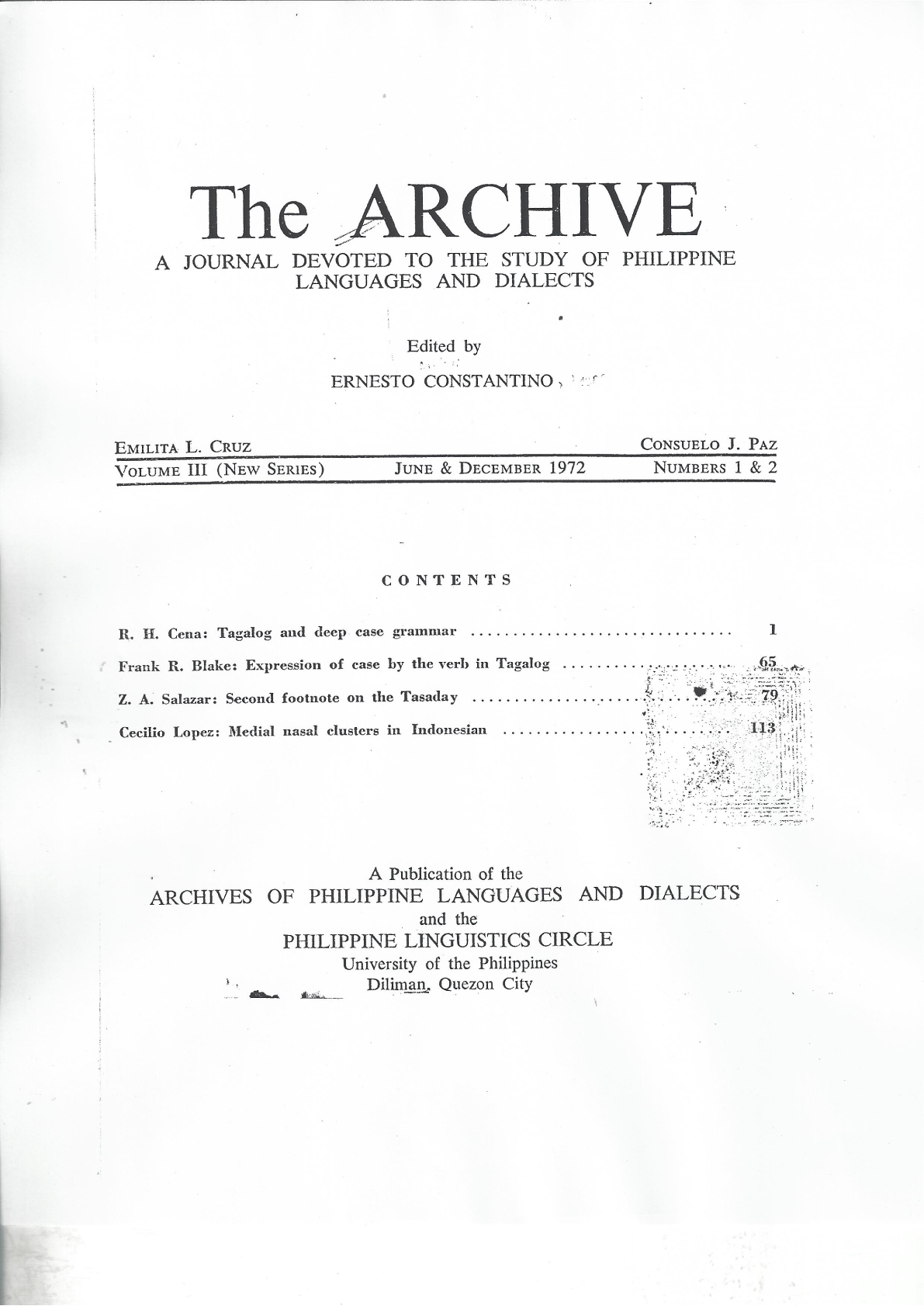Expression of Case by the Verb in Tagalog
Abstract
Excerpt
In Philippine languages, on the other hand, this case-indicaing function of the verb is developed to a high degree. The active, as in Indo-European and Semitic, denotes the case of the agent, but the passive expresses not only the accusative, but also the dative, instrumental, locative, and ablative; the noun whose case is to be indicated being made the subject of the passive verb.
In Tagalog, which may be taken as a type of these languages, a verb may have an active and three so-called passive forms, which are known respectively, according to the particles with which they are formed, as the in, i, and an passives.
Published
2024-12-16
How to Cite
BLAKE, Frank R..
Expression of Case by the Verb in Tagalog.
The Archive, [S.l.], v. 3, n. 1–2, p. 65–78, dec. 2024.
ISSN 2672-295X. Available at: <https://journals.upd.edu.ph/index.php/archive/article/view/10219>. Date accessed: 29 aug. 2025.
Section
Articles


